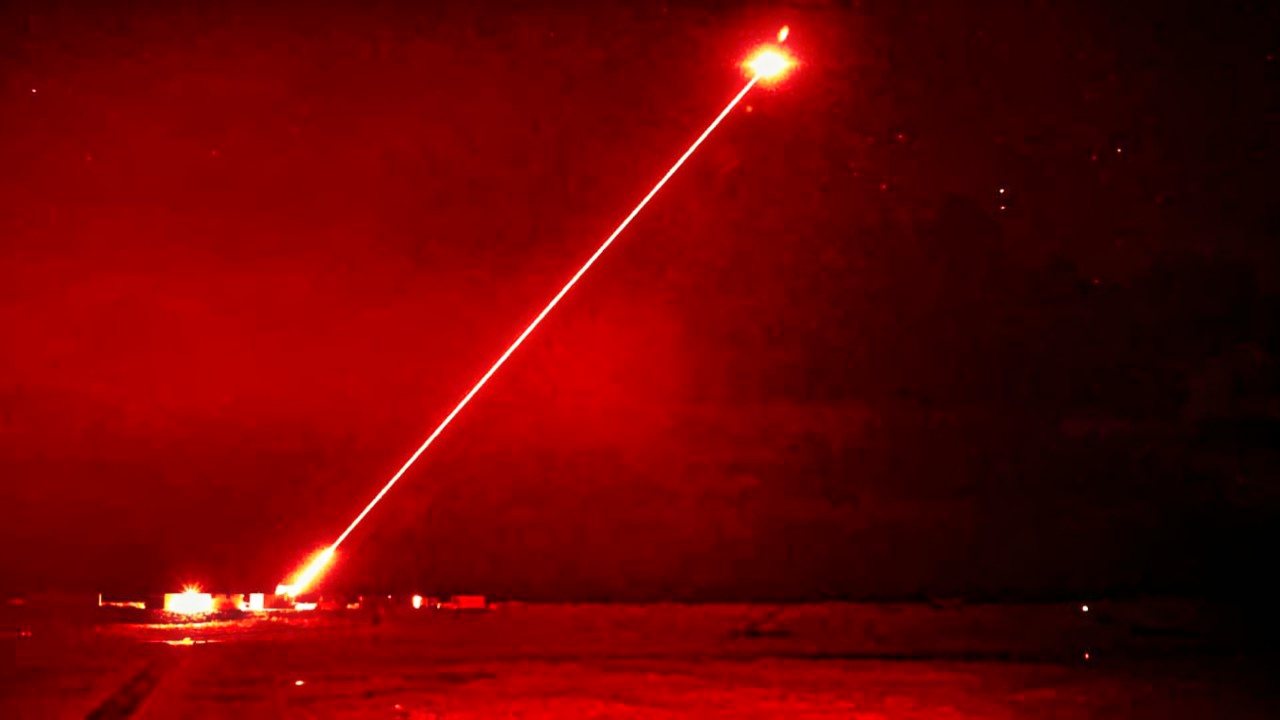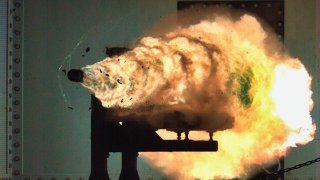DragonFire: Royal Navy Warships Will Use Lasers to Hit Drones and Missiles
The Royal Navy is set to revolutionize its warship armament by equipping them with the DragonFire laser-directed energy weapon (LDEW) by 2027.
Summary: The Royal Navy is set to revolutionize its warship armament by equipping them with the DragonFire laser-directed energy weapon (LDEW) by 2027. This initiative, propelled by over £100 million investment from the UK Ministry of Defense, follows successful demonstrations at the MoD’s Hebrides range. DragonFire offers a cost-effective solution for air defense, costing less than £10 per shot and capable of precise targeting. It combines multiple laser beams to deliver powerful, silent, and invisible strikes capable of disabling drones and missiles efficiently. The UK plans to hasten its deployment, potentially aiding Ukraine with early prototypes, affirming its position at the forefront of military technology.
Royal Navy to Arm Warships with Cutting-Edge DragonFire Laser by 2027
Move over hypersonic weapons, the Royal Navy is on track to equip its warships by 2027 with a “world-leading” laser beam that travels at the speed of light. The UK Ministry of Defense (MoD) announced plans to install the DragonFire on its surface combatants following the platform’s successful demonstration earlier this year.
The laser-directed energy weapon (LDEW) system will continue to undergo further live firings and follows the first successful demonstration that took place at the MoD’s Hebrides range off the northwest coast of Scotland in January. The tests were the culmination of several years of work.
The DragonFire program was first unveiled in 2017.
Cost-Effective Air Defense System
It has been noted that the conflicts in Ukraine and Gaza have resulted in the demand for munitions vastly outpacing supply, while it has been seen as increasingly cost-ineffective to counter drones and small anti-ship missiles with expensive air-defense missiles.
Though the UK’s MoD invested more than £100 million ($125 million) to develop DragonFire, the cost to operate the laser is typically less than £10 per shot. It is also a precision weapon that can hit a £1 coin from a kilometer away.
As previously reported, in addition to its extreme accuracy, the DragonFire platform can engage targets at the speed of light. In contrast, its intense beam of light can cut through the target, leading to structural failure or more impactful results—such as if an inbound missile’s warhead is targeted.
DragonFire was manufactured by a trilateral industrial partnership from the UK’s defense industry including MBDA UK, Leonardo UK, and QinetiQ.
Laser Focused
DragonFire truly lives up to its moniker but instead of fire, it focuses thirty-seven channels of 1.5kW laser beams, arranged in a hexagonal array, which are combined with mirrors to merge and amplify the power. This is a physics phenomenon known as constructive interference.
It won’t result in a science-fiction laser blast, however. The beam is invisible and silent as the wavelength of the light is about one micron, which cannot be seen by human eyes while it is also close to the infrared spectrum of light.
And while it has been largely made of off-the-shelf laser parts, it can burn through sheet metal in seconds. DragonFire has destroyed drones and caused incoming missiles to explode.
The goal of the program is for the laser to counter drones and even missiles instead of launching intercepting missiles, which can cost tens and hundreds of thousands of dollars. This would shift the balance so that the drones and anti-ship missiles are more expensive than the platform to counter them.
Coming Soon to Royal Navy Warships
The UK’s Porton Down Defense Laboratory (DSTL) is now working with industry experts to transform the laser weapon from a lab experiment to a platform that can be mounted on warships and be made battlefield-ready by 2027.
The DragonFire isn’t being rushed, but DSTL seeks to avoid any delays, which can result in a waste of money.
“Every time there’s a delay, there’s a cost attached,” said Grant Shapps, the UK’s defense secretary, who visited DSTL on Thursday told The Telegraph. “What I want to do is speed up what would usually be a very lengthy process, possibly up to 10 years, down to a much shorter timeframe and get it deployed, potentially on ships and potentially on land.”

In addition to arming British warships before the end of the decade, Shapps has said he would like to have prototypes sent to Ukraine even sooner—even if they aren’t 100 percent refined.
“I’m absolutely certain that what we’ve got going on here is very special, and a level that other countries are unlikely to be replicating because it’s so cutting-edge,” Shapps added. “The product itself is genuinely years ahead.”
Author Experience and Expertise: Peter Suciu
Peter Suciu is a Michigan-based writer. He has contributed to more than four dozen magazines, newspapers, and websites with over 3,200 published pieces over a twenty-year career in journalism. He regularly writes about military hardware, firearms history, cybersecurity, politics, and international affairs. Peter is also a Contributing Writer for Forbes and Clearance Jobs. You can follow him on Twitter: @PeterSuciu. You can email the author: [email protected].


